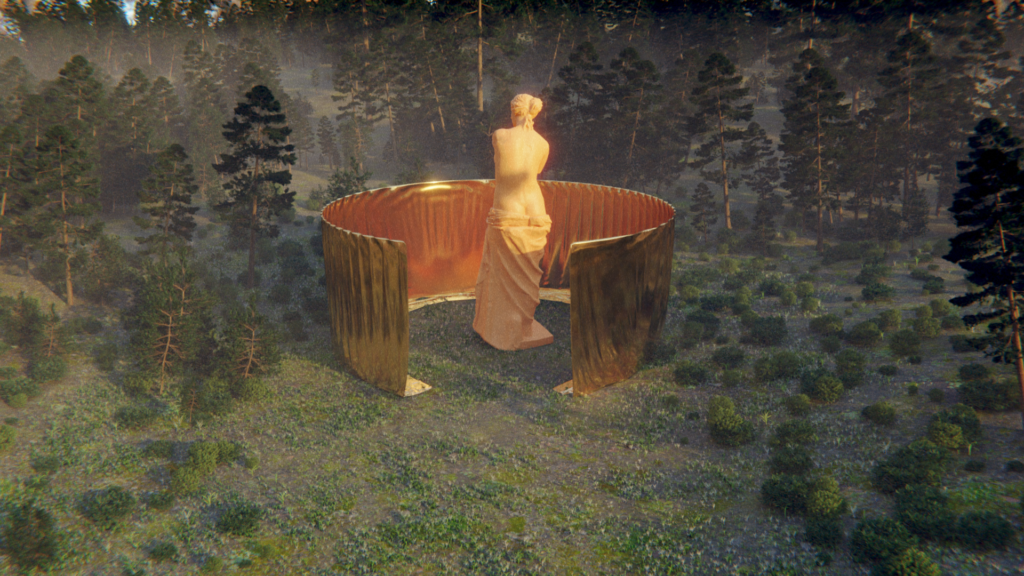I suppose there’s no excuse for the delay in missives. Things got busy and intense and I had to stop for a bit. Back in March I was getting back to PhD work, a few weeks later I had to put that aside as work got too intense and I had to focus up. Then on Friday I was at an event and, following a nip out for a call, caught the end of Alex’s bit where she said something like ‘blog, just blog’ and I sort of internally sighed and said ‘ok’ to no one in particular.
I am constantly trying to find ways to squeeze the most out of the time in the day but tend to shirk ‘productivity hacks.’ I enjoy doing the work and spending time with things there’s just never enough time so I’ve found rhythm really important – regular beats of physical and mental exercise that refresh the flesh machine. I suppose everyone is different: A post from Jay was about the pressure to produce weekly and he talked about some interesting folks that publish when they feel like it without regard for the algorithm and then there of course is Matt’s advice is to publish when it feels right (which for him is multiple times a week, usually at night).
But I like and rely on rhythms, beats, deadliness and regulation to know what I’m doing moment-to-moment and I think I’d felt ‘I’ll get back to the blog when I have something to say.’ But instead, I just went around saying those things because sitting down to write is a more strenuous process. But that’s sort of the point; putting effort into forming up thoughts and properly reflecting has always been really important and has benefits over time so here we are again. All that said, don’t expect big hot reckons today. I’m just reactivating all these muscles and stretching and yawning. And absolutely do not expect renders right away. Instead, this post contains bits and pieces from the last few months.
LinkedIn is for Boats
A few years ago, amidst the furore over Cambridge Analytica, PRISM and the creeping idea that maybe this whole social media thing was really potentially not very good over all, a new outfit called Ello briefly popped up which the design/futures/art/tech community gleefully hopped on for a few weeks. The premise was simple – no ads, no tracking – but this was before that sort of thing raised suspicions that one day they would start to figure out a way to extract money from you through subscriptions or similar.
Anyway, Ello had a bunch of curious features in its beautiful simplicity such as only being able to integrate the bread and whale emojis instead of like thumbs and hearts which thus became stand-ins (🍞🍞🍞 = very good, for instance) but the whole thing was like busting down the door to a massive empty warehouse with your friends, looking around and wondering ‘…what is this for? What are we supposed to do with it?‘ A sager group of people might have considered that this heralded the end of social media, that without the cajoling and prodding to force interaction, we were kind of fine just hanging out and talking and maybe should have disbanded. But Ello had a very particular design feature; a full-width feed. Yes, instead of a narrow vertical scroll, it had a full-width scroll like an old forum and so… Ello was for boats. Or more accurately, pictures of boats because the aspect ratio of the scroll suited boats.
I was talking with friends the other night (mostly from academia) about how increasingly resigned they are to accepting that LinkedIn is now all that’s left and that’s sort of sad but I think the reason it remains is because LinkedIn is actually for something. Sure, that thing is humiliating self-promotion but at least it has a purpose while the rest of them are sort of just ‘places’ or ‘communities’ in a busy, noisy world.
The fediverse is too complex and fractured to really resuscitate the feeling of early Twitter and the Meta stable are all horrifically over-engineered advertising psyops so really all that’s left is the blue jobs website. When I left academia, well I don’t mind telling you, I was shook by the seriousness with which LinkedIn is taken having spent years understanding it as this strange little interactive CV that you might update once a year while getting in rolling arguments over on Twitter. But while all these others are scrabbling around trying to figure out what they’re for (Instagram is for photos, videos, reels, stories, rooms, voice notes, calls, spaces) LinkedIn is just for hustle. LinkedIn isn’t a network, it’s a service; sometimes literally serving you jobs, sometimes serving your ego. The vast majority of people aren’t going to LinkedIn for lifelong, deep, intellectually and spiritually enriching community engagement: You just take something you did, dress it up as some massive revelatory experience, tag a bunch of folks, lob it over the wall and move on with your life. Everyone’s doing the same so no one finds it particularly obnoxious anyway.
In the post-Muskian Twitter period, there was this frenetic squabbling over where this massive community would relocate, to various decentralised platforms that require a lot of active engagement and push to make work. Maybe that brief period of parasocial relationships with strangers on the Internet is over and that’s just fine. Maybe a super transactional, collective fiction where we treat the platform as a service rather than a community is healthier anyway.
Recents
- Malina and I ran a second session on Speculative Design for Milan Politech’s service design executive masterclass. This time we took them through a whole futures and speculative design process from beginning to end, starting with working with trends, to scenarios, to worldbuilding to designing things from that world that they then performed back to the group in diegetic livestreams, court cases and adverts. It’ revealing how tight 7 or 8 hours is to get that stuff across to folks but they really gave it their all to get into it.
- I did an interview for Design Decode over the last few weeks. A couple of friends have also been featured recently, Michela who puts it all together is an incredible and diligent researcher and a thoughtful interviewer. Having the questions weeks in advance and such well-crafted ones meant I probably massively over thought it but anyway, you can go there for similar thoughts to what you might get here but perhaps more concise.
- A piece I wrote for Towards the Realm of Materiality on the interface from Minority Report has been published. The book invited various authors to explore the ficitonal technologies of Philip K. Dick. I wrote about how it serves as a sort of incarnation of computational imaginaries up to that point (2001) and has perversely incentivised the development of computational technology since. Twenty-three years later, we are still trying to build things from Minority Report. Julian also invited me back on the Near Future Laboratory podcast to talk about it briefly.
Reading
- Our friend Paul Graham Raven has been turning his hand to content. Here’s the first bit of content on living with the mess of contradictory but equally true theories and resist the urge to eliminate one or the other. In the case of the titular theory; is doomscrolling causing a decline in mental health or is a decline in mental health causing more doomscrolling. Why not both?
- I read this article on AI becoming a technology of faith. There’s nothing surprising in there but it articulates how grandiose promises are used to obfuscate current failures, in this case a promise of a smart health assistant based on technology that makes stuff up. The telling part though, which is not unusual is when the writer brings up Sam Altman on the risks posed by such intimate health data being potentially accessible to employers:
Huffington suggested that Thrive’s AI platform would be “available through every possible mode,” that “it could be through your workplace, like Microsoft Teams or Slack.” This led me to propose a hypothetical scenario in which a company collects this information and stores it inappropriately or uses it against employees. What safeguards might the company apply then? Altman’s rebuttal was philosophical. “Maybe society will decide there’s some version of AI privilege,” he said.
Which sort of summarises another aspect of this hubris; ‘It’s not my fault if my ideas cause harm, that’s society’s problem.’ - Ok I didn’t capture any other reading. For your info I tend to ‘tweet’ things I read as I read them here (ew) and here (sigh) but also bookmark things here.
Listening
Aespa – Armageddon, The 1st Album
Ok, sorry it’s been so long. Sometimes feels like that’s all life is – stumbling along, tripping and apologising profusely even as no one actually cares that much. Sonder. Love you.

